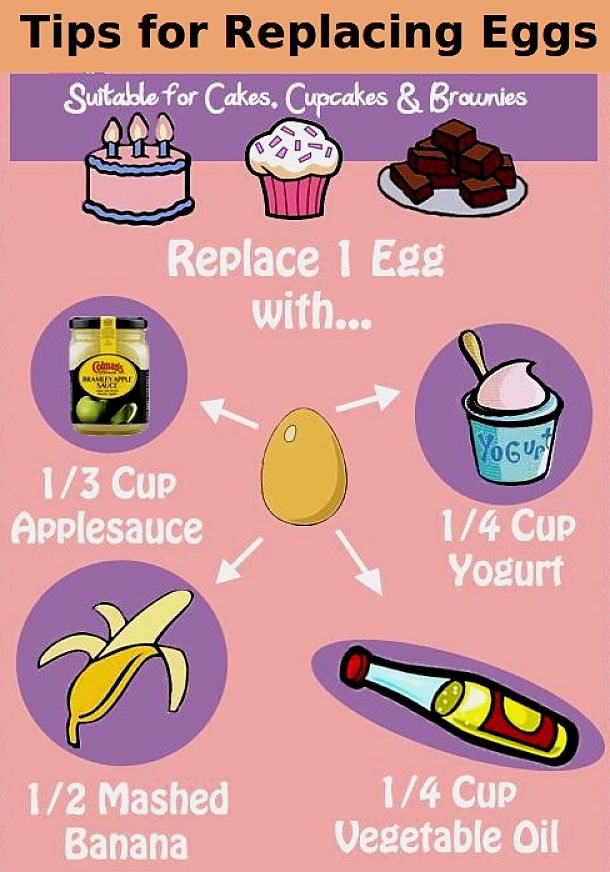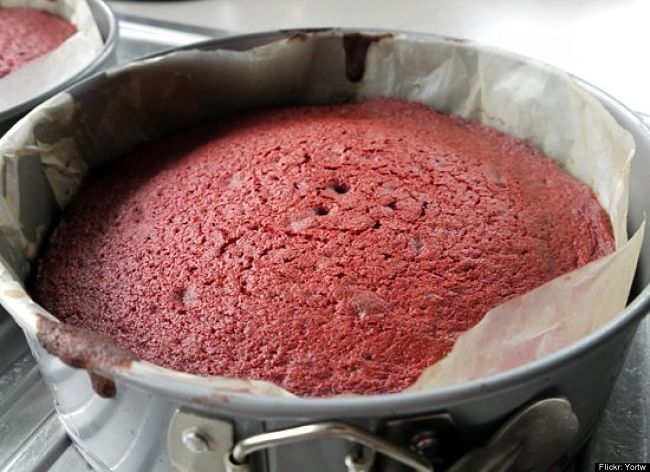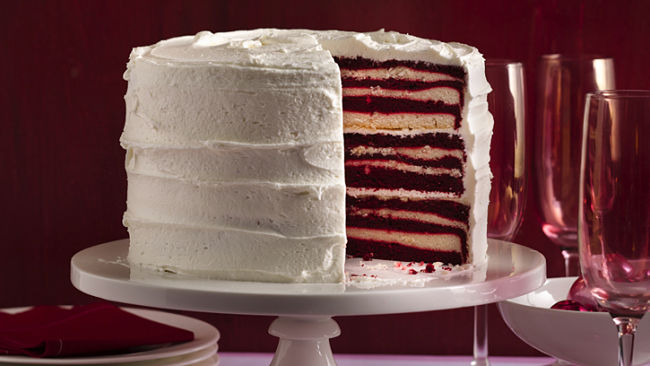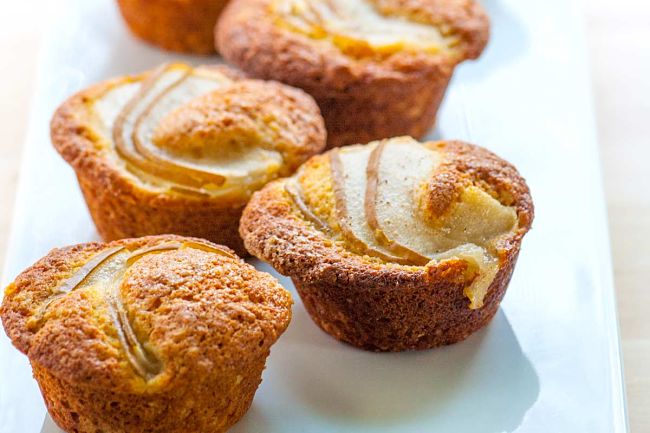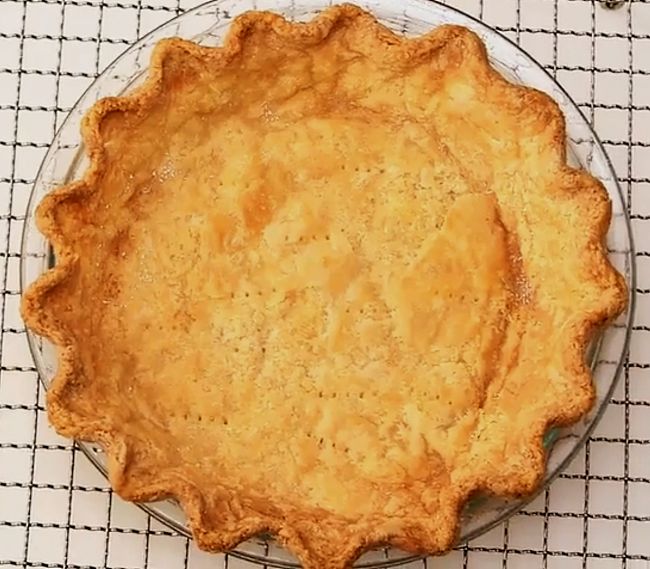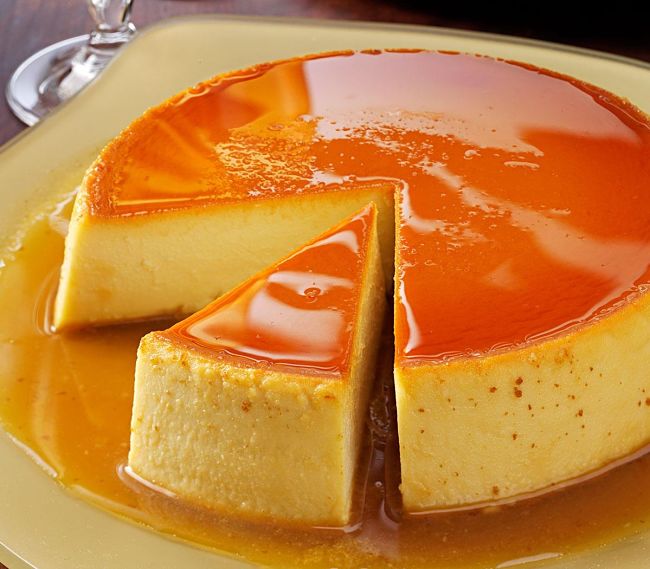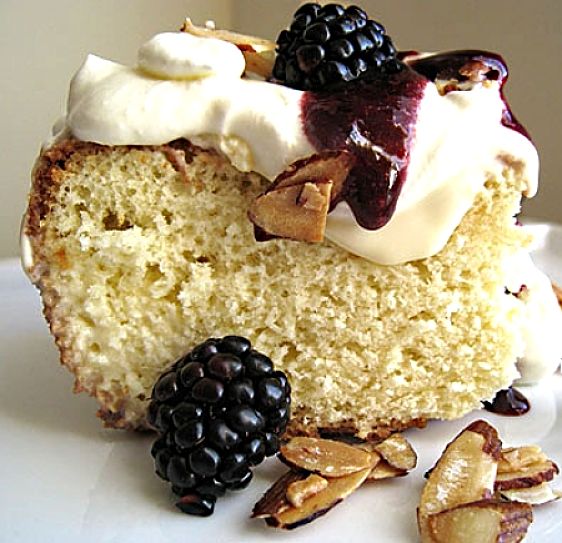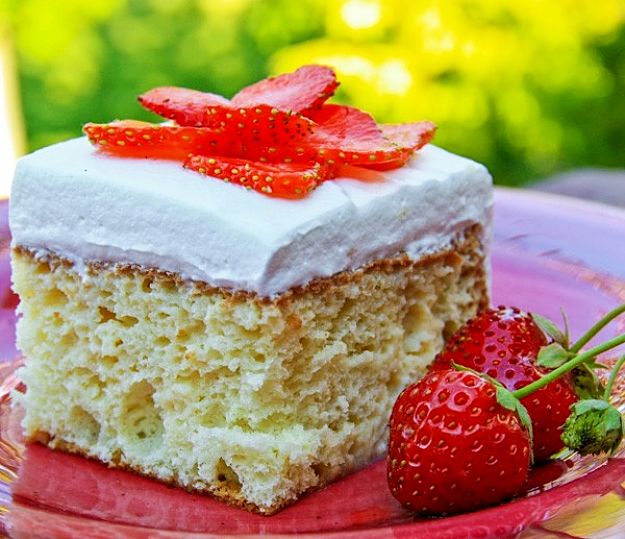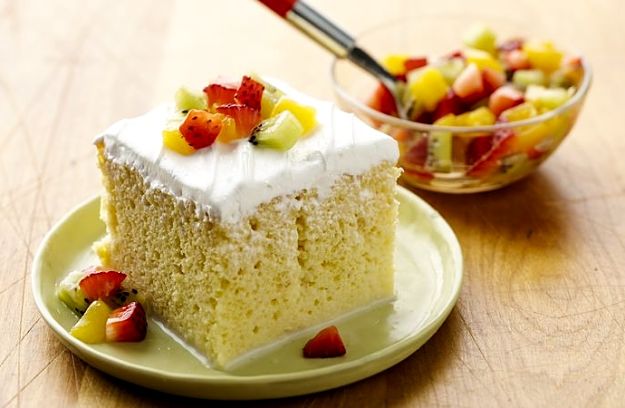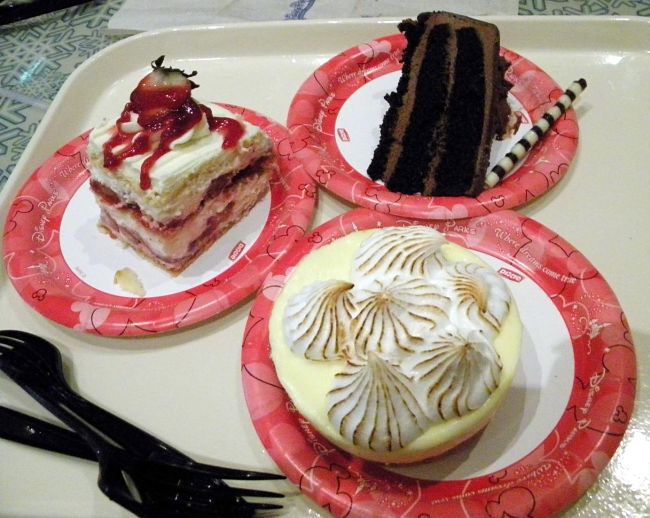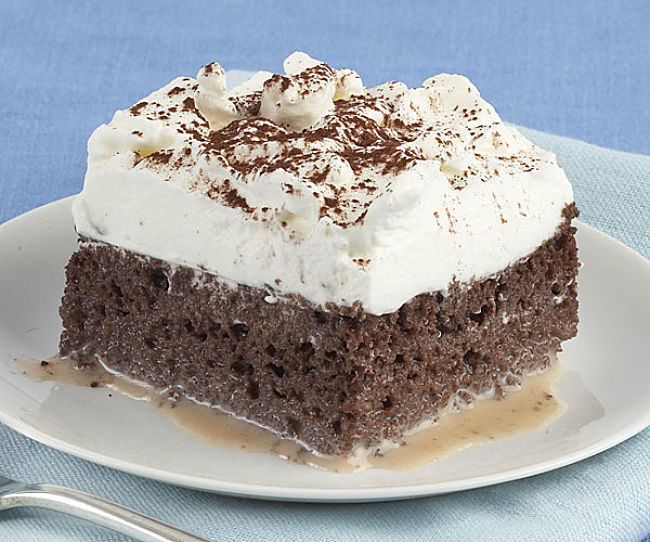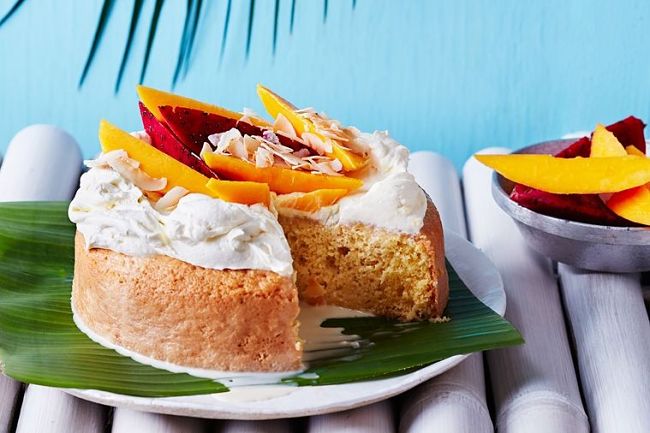Top Tips for Baking - Tricks for Cakes, Muffins, Cupcakes, Cookies, Scones
Ever baked a lovely cake only to have it ruined by a crack in the top? Or cut a lovely pudding only to find a hole inside from an air pocket? As a child we were frequently subject to 'Disaster Pudding' when something went wrong. Well now is the time to get some tricks and tips gathered from all the experts that will help you avoid all these nasty surprises that ruin your reputation as a bakery cook. There is a lot of fancy information out there but its now time to get back to the basics and get the baking right. Topics covered include:
- Oven Temperature
- General Baking Tips
- Greasing the pan
- General tips for cakes
- Tips for Sponges
- Tips for cookies and biscuits
- Tricks for muffins and cupcakes
- Ingredients
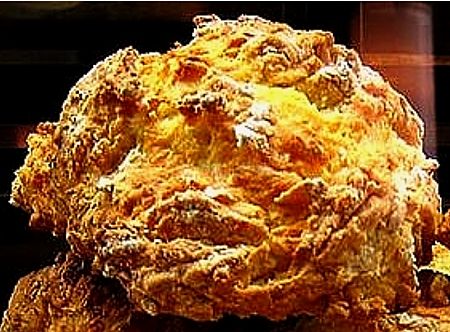
Oven Temperature
While the temperatures are stated in the recipes there is a lot of variations between different types and styles of ovens - electric versus gas, fan-fed versus conventional ovens. There is also a lot of variation between where the pan is places in the oven - top, middle or bottom, or back versus front on the shelves.
Well the proof is in the pudding they say - so mix-up a batch of scones or cupcakes or some other simple recipe and do some experimenting. For scones, cook a batch on the middle rack at 220 degrees C. If it takes less than about 11 minutes to cook them, your oven is hot. If it takes longer than 14 minutes, your oven is too slow and cool. Try various combinations until you find the adjust needed for your oven. For example you may find that you have to increase or decrease the temperature setting of your oven by 10% say. So if the nominated temperature is 200 degrees C you may have to set your oven to 220 (10% increase) or 180 (10% decrease). Or you may find that if its too hot, placing the pan on the centre or lower racks may do the trick. Keep experimenting until you get it right for your oven.
General tips for cakes
- Cake top is cracked - the baking oven was too hot at the start.
- The baked cake has white spots on the surface (crystals) on it-the sugar wasn’t blended in correctly and failed to dissolve. Castor sugar is best for cakes as it disintegrates fastest.
- The baked cake has a crust around the perimeter - could be due to a surplus of sugar, reduce the quantity next time you bake the cake.
- Air pockets and large bubbles -generally due to inadequate blending of the ingredients or from not bubbles left in the mixture when it is added to the tin (although there is some argument about this - some people bag the tin on the bench to shatter the bubbles).
- Cake sticks to the base of the tin - when you grease and apply flour to the tin, don’t be tempted to leave surplus flour on the bottom. Make certain the flour evenly coats the tin but in a thin layer only. Some people pre-mix the flour and oil and brush it on to get a thin even coating. Or use oven baking paper to line the tin, or spray-on oils.
- Large domes form in square or rectangular shaped tins - Try using a spatula or a spoon to create a crater in the centre of the mixture before baking, or reducing the amount of leavening used.
- If the baked cake is dry, double-check the size of the eggs - Small eggs could be the cause, or the oven temperature could be too hot. Check the crumb texture of the cake - if this is dark, try reducing the oven temperature by 10 degrees and cooking it for longer. Slower cooking retains the moisture
- If texture of the baked cake is heavier or denser than you want - try cooking it more slowly at a reduced temperature.
Tips for orange, chocolate and banana Cakes
- Don't be tempted to overdo the chocolate otherwise the cake may have a bitter smell and taste. Always taste the cake mixture before transferring it to a tin and adjust the taste before cooking it. A sprinkle of salt can often smooth the taste of chocolate.
- If you use cocoa, a pinch of baking powder to the mixture when blending and dissolving it as this tends to give it a smoother flavor.
- For orange cakes and other cakes using fresh fruit, make sure the fruit is very fresh and lively. This also applies to sultanas and raisins. An orange that is old and tired will give the cake a stale flavour.
- Banana cakes should be quite coarse in texture - if it’s too smooth the batter has been over-mixed. For a real banana flavour use fruit that’s well ripened and not green but leave the banana in chunks.
Tips for Icing and Frosting
- Before adding icing a cake ensure the cake is completely cooled down, otherwise the icing will get into the cake.
- If you want the icing to stay on the top of the cake and not run down the sides, cheat by applying a baking paper collar around the cake. Remove the paper when the icing sets. Also only apply a thin layer of icing to avoid the excess.
- Do it in stages - apply a thin layer of frosting, then transfer to the refrigerator, and after 60 minutes complete the icing. This helps keep the outer frosting layer free of crumbs.
- To give the frosting a shiny, glossy look, try using a hair dryer to melt the frosting surface a little, or a knife or icing spatula heated in hot water.
- For a simply chocolate coating place a sealed bag of chocolate chips in hot water - squeezing occasionally to mix. Open by cutting off one corner of the bag and gently squeeze the melted chocolate out onto the cake. This can also be used to add decorations - a simply icing bag.
- To help stop frosting cracking or flaking add a pinch of baking soda when preparing the frosting.
- If the icing is too thin and runny, dust the top of the cake with flour or icing sugar before applying the icing.
- For one layer cakes, turning the cake over before icing provides a perfectly even and flat surface that makes it easier. For two layered cakes also turn upside down before icing as this ensures an even layer. Otherwise you can cut the top off a domed cake to create a flat surface.
Tips for Cookies and Biscuits
- Always use good quality ingredients as you want the tastiest cookies to reward your efforts
- Always use unsalted butter and nuts, large-size eggs, and pure extracts of vanilla or almond - not fake substitutes
- Always measure the ingredients accurately and square off the teaspoons and tablespoons
- Do not sift the floor unless the recipe calls for it an don't squeeze the flour down in the measuring cups
- Use parchment paper for baking without sticking and easy clean-up, unless you have non-stick baking dishes. Otherwise grease with butter or spry-on oil. Do not use vegetable oil as it tends to burn and makes the dishes hard to clean. Or you can use reusable Silicone Baking Mats. Applying flour to cookie sheet after it is greased, will stop the mixture spread out as much when baking.
- For cut-out cookies, cool the dough down before cutting it out. Remove from the fridge and allow it to soften a little at room temperature for about 10 minutes before rolling out - this means you are always working with the same consistency.
- Modify the baking times to get the texture you want in the finished cookies. For most recipes leaving them slightly underdone makes chewier cookies; baking for longer time makes them crunchy. Having a thicker mix and making higher mixture balls makes thicker cookies which tend to be chewy.
- Cool the cookies down completely before icing.
- Cookie Sheets with very low sides helps the cookies to bake quickly and evenly. You can use a pizza dish.
- For perfect cookies only bake one cookie sheet at a time, placing the sheet in the centre of the oven and make sure that there is a good gap all around the sheet. Avoid placing two trays one above the other as this causes uneven baking.
- Make sure you completely cool your baking sheets between batches. Otherwise, the hot sheet may affect the cookie's shapes and texture, making the cookies spread more. You can cool the baking pans quickly by run them under cold water and wiping dry. Remove the baked cookies from sheet to wire rack immediately, unless the recipe says otherwise. Cookies are left on the sheet to cool, may stick.
- Make the cookies a uniform size and thickness so they will all bake evenly in the same amount of time. Using a small ice cream scoop will provide uniform size cookies that are easy to handle.
General Baking Tips and Tricks - Ingredients and Preparation
- Measure the flour correctly
- Don't overwork the dough; mix just until the flour disappears.
- Chill the dough before baking as this makes the dough easier to work with and has a consistent texture for cutting out or placing in dabs on the trays. Chilling the dough also seems to boost the flavor and relaxes the dough to relax a bit.
- Use a silicone, marble or non-stick rolling pin - this means you will less flour when rolling out the mixture and the cookies will tend to be softer. Chilling the rolling pin also keeps the dough cold and makes it easier to work with.
- Soften the butter properly - It is tricky soften butter in a microwave oven as often part of it melts, and this alters the structure of the mixture and leads to poor cookies. The best way to soften butter is by letting it stand on the bench for a couple of hours at room temperature . You can speed up the process by grating the butter into a bowl.
- Freeze the dough - Making a mixture and freezing it before hand not only saves time, but it improves the texture of the baked cookies. You can even form the cookies into balls and freeze them - ready to be placed onto baking trays.
- Baking times - Set the timer for several minutes less than the stated cooking time in the recipe. Take them out when they are just starting to look done and let the residual heat from the cookie sheet finish the baking. Slightly under-baked cookies can be more tender, chewy and moist.
Tips for Baking Sponge Cakes
- A sponge cake is generally cooked when it has shrunk lightly away from the sides of the tin. it has a light color and is springy when touched. It will also be light golden in colour.
- If a cake sinks in the middle it is probably due to too much raising agent such as baking powder or baking too quickly or under-cooking if the cake sinks when out of the oven.
- If a cake has a patchy or speckled top surface it could be caused by granulated sugar not mixing with the other ingredients - use powdered sugar instead.
Top Tips for Pies and Tarts
- Line a Tart Tin with baking powder as this helps to make the Tart Shell crisp.
- Preheat oven to 200°C (400°F)
- Roll the pastry dusted with flour, around a rolling pin to help you pick it up.
- Lower the pastry over the tin and unroll to cover
- Push the pastry well right into the edges of the tin and then push it up the sides.
- Use the rolling pin to roll over the top and cut off excess pastry
- Prick the base with a fork and chill in the refrigerator for 15-20 minutes to set the pastry before baking
- Pre-bake the base by lining the pastry in the tin with cling film or baking paper, and then add dried peas
- Set the tin on a baking sheet and bake on the central shelf of oven for 10-12 minutes
- Remove cling film or paper and dried pees and return pastry case to the oven for a further 5 minutes to dry it out.
- To prevent pastry becoming soggy, brush the inside of the pastry case wit a beaten egg
- Bake again for almost 10 minutes until set and shiny.
Tips for Baking Fruit Cakes
- A fruit cake is cooked when a fine wooden or metal skewer, inserted into the centre comes out clean.
- The cake should also have the correct colour - light brown for a light fruit cake and dark brown for a traditional rich fruit cake.
- If a cake sinks in the middle it is probably due to too much baking powder or under baking
- If a cake has a patchy or speckled top it could be due to granulated sugar used instead of caster sugar or the cake mixture not mixed sufficiently.
- If fruit sinks to the bottom of a cake the cake mixture may be too soft or slack and the fruit too large and syrupy. If this problem occurs attempt to cut the fruit (e.g. cherries) and also wash and dry the fruit.
Top Tips to Stop Cakes Sticking To Pan
- Place a thick, clean towel in the kitchen sink and pour a kettle of boiling hot water over the towel to heat it, and then drain. Set the cake (still inside the pan) on the hot towel and leave it for 1-2 minutes. Then the cake should turn out easily. Turn the cake over on a sheet of wax paper or a cooling rack. Place a clean, thin cotton towel on top of the cake pan and using a hot steam iron, heat the bottom of the pan for a few minutes. The pan should lift off cleanly.
- Cool the cakes in the pans completely before trying to remove them. Gently insert a knife between the outside of the cake and the inside of the pan. Run it along the pan to loosen things up before turning over.
Top Tips for Muffins and Cupcakes
- Grease muffin cups by spraying each cup with no-stick cooking spray or use silicone muffin tins for easy release. Note: For rounded tops on muffins grease only the bottom of the cup and halfway up the side of the cup.
- Use paper liners in muffin cups for easy clean-up and removal.
- If muffin cups are filled more than 3/4 full the muffins will have flat, "flying saucer" tops. Leaving extra space in the cups produces lovely round tops.
- If baked muffins stick to the bottom of the muffin cup, place hot muffin pan on a wet towel for about two minutes before trying to remove again. Next tip use cup liners
- The perfect muffin has a thin brown crust, a slightly rounded top with a pebbled appearance and is moist inside. There should be no peaks and no tunnels which are usually caused by excessive mixing and too much liquid so that the muffin batter is too thin.
- Extra Leavening is Not Better - so stick to the recipe
- Bake cupcakes for the minimum time suggested, then test them to see if they're done. Cupcakes are done when you can insert a toothpick or small skewer into the middle of one and it comes out clean and dry.
- Place cupcake pan on cooling rack for at least 5 minutes before trying to remove them from the pans.
- Remove cupcakes from the pan and place them back on the rack to cool completely.
Top Tips for Scones and Shortbread
- If you use fruit or nuts in the ingredients for scones, muffins or buns try tossing the fruit or nuts in a little flour before adding to the wet mixture. This helps to blend them in and creates a more even distribution.
- When making shortbread, don't use old butter that's been in the fridge for a long time. It could be tainted by fridge flavours that can be transferred to the taste of the baked goods.
- Some people use powdered milk and water for scones rather than fresh milk. This makes the scones lighter with a softer texture. Sift the powdered milk with the flour and add the water.
- When cutting scones out of the rolled batter mixture to bake, don't twist the scone cutter as this could cause the scones rising unevenly.
- If your scones are smooth on top or heavy you have probably over-mixed them. Scones should only be mixed until just combined
See More Articles about Cakes and Great Baked Goods Recipes
=> Light Fruitcake Recipe with Gin Soaked Raisins
=> Best Easy Carrot Cake Recipes in the World and Best Icing, Frosting
=> Best Simnel Fruit Cake Recipe with Tips and Variations
=> Best Honey Cake Recipes - Bee Inspired by these great recipes
=> Tres Leches Cake Recipe - Easy to Make Latin American Dessert
